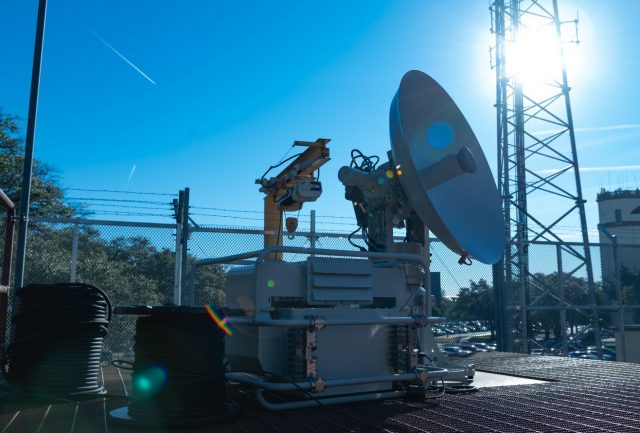
The US Air Force Global Strike Command (AFGSC) is modernizing older infrastructure by implementing the largest upgrade to its Nuclear Command, Control and Communication (NC3) systems in more than 30 years.
In January, Barksdale Air Force Base, Louisiana, became the first, of two AFGSC bases, to receive and implement the Global Aircrew Strategic Network Terminal—a new NC3 system that provides assured, survivable, fixed and transportable communications to wing command posts, munitions support squadrons and mobile support teams.
“Global ASNT provides the nuclear enterprise a new two-way reliable, redundant and robust communication path capable of connecting forces anytime, anywhere—allowing AFGSC greater agility and lethality than ever before,” the command says.
“This system streamlines our NC3 capabilities and allows our team to deliver winning combat power,” said Senior Master Sgt. Katrina Strother, 2nd Bomb Wing Command Post senior enlisted leader. “It virtually provides commanders a standardized ‘command post in a box,’ replacing a single use system with a multi-use communication package that can talk on a multitude of networks and provides a modular design for future upgrades as opposed to costly replacements. Additionally, Global ASNT is survivable in Chemical, Biological, Radiological, Nuclear and High Yield Explosives; and High-altitude Electromagnetic Pulse environments—allowing operators the ability to work through a conflict without fail.”
As explained by AFGSC, NC3 refers to an integrated weapons system comprised of facilities, equipment, communications, procedures and personnel. Ultimately, NC3 is what the National Military Command System uses to exercise and conduct continuous, survivable and secure Nuclear Command and Control.
“Global ASNT is a transformational new system that replaces Cold War era communications equipment with the intent of enhancing the warfighters capability as we transition to the command post of the future,” said Capt. Tony Scott, AFGSC Command Post NC3 ground requirements manager.
The acquisition of Global ASNT brings to bear years of research, planning and development.
“This acquisition is comparable to rolling out the new KC-46 or B-21 Raider,” said Chief Master Sgt. O’Shea Rhodes, AFGSC Command and Control Operations functional manager. “Similar to the KC-46 or B-21, this new weapons system increases force lethality and nuclear command and control capabilities. The idea is that all these acquisitions are designed to be interoperable—an important feat given the demands of today’s strategic environment.”
The new system, with acquisition costs in development and procurement ranging nearly $1.3 billion, will roll out across active duty, guard and reserve units in phased increments. The first phase consists of development, upgrading and installation; and the second phase consists of implementation. Specifically, the system implementation includes terminal replacement and providing communications for aircrew alert.
Total costs also factor in an estimated $82 million in enterprise-wide facility preparations, to include facility power modifications and upgrades to heating, ventilation and air conditioning units. However, Global ASNT transcends beyond the AFGSC mission and is forecasted for installation at 43 locations, across seven commands, in seven countries, on three continents, to include four Major Commands and the US Space Force.


























